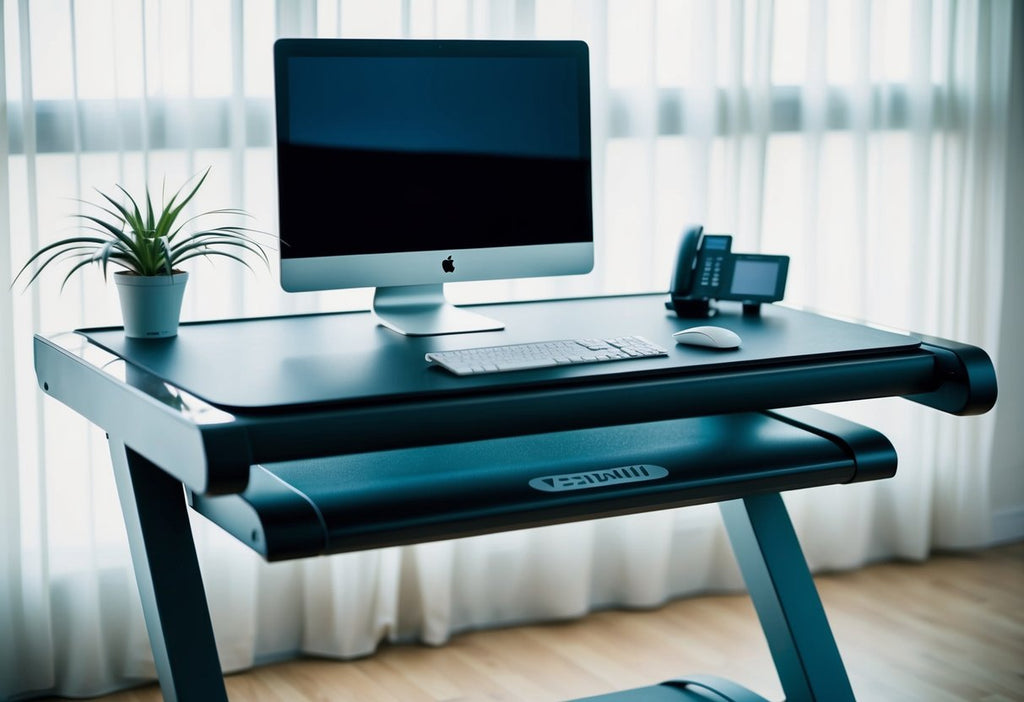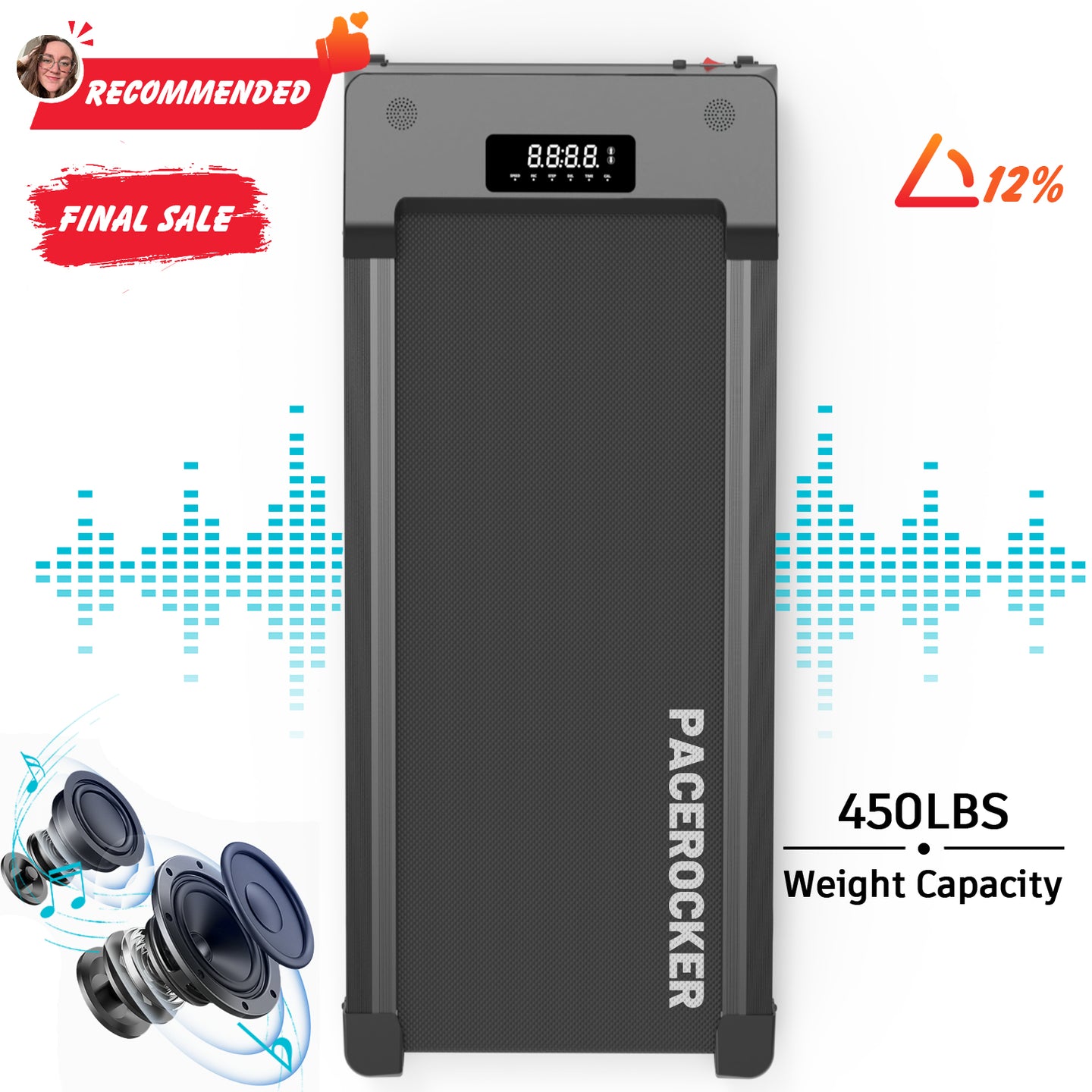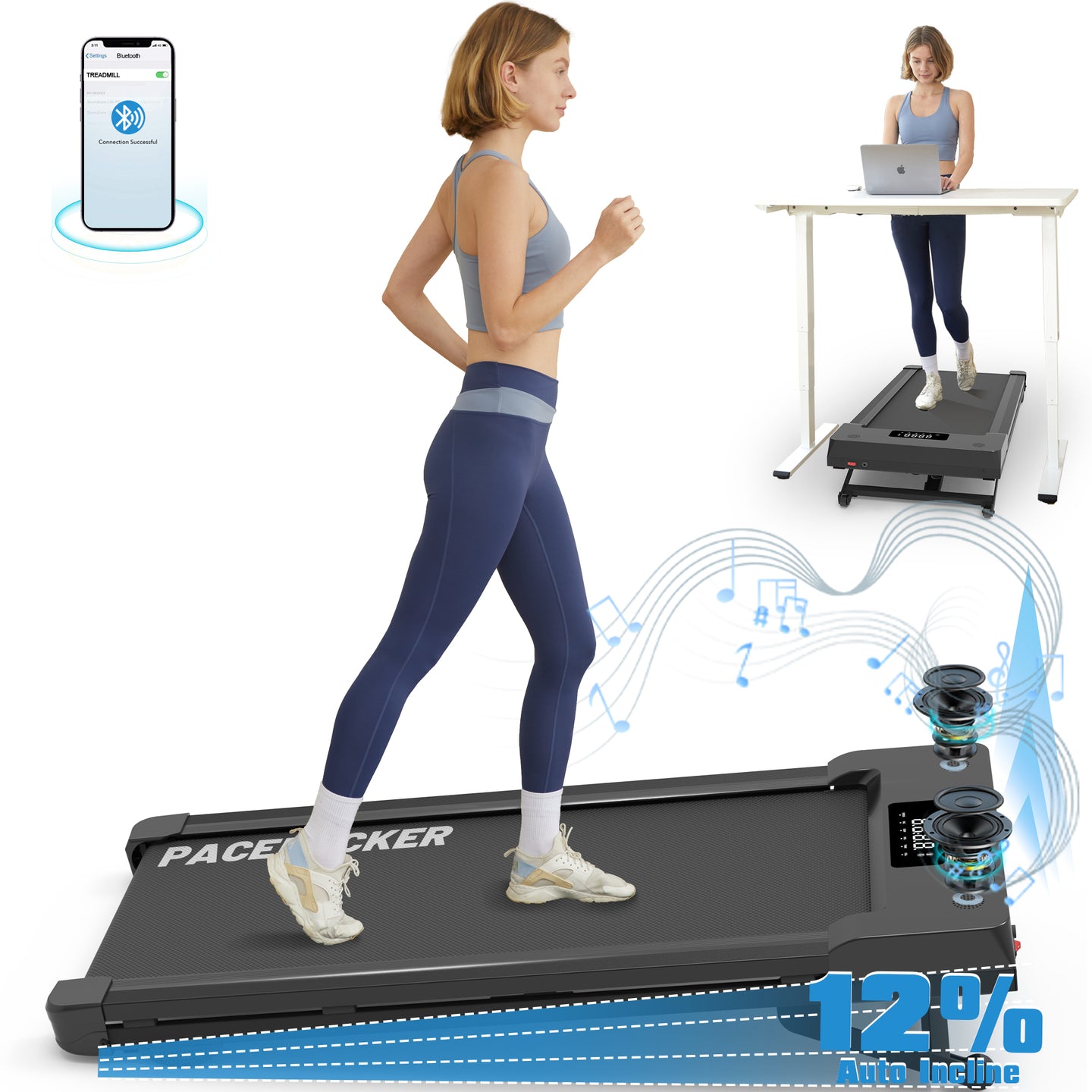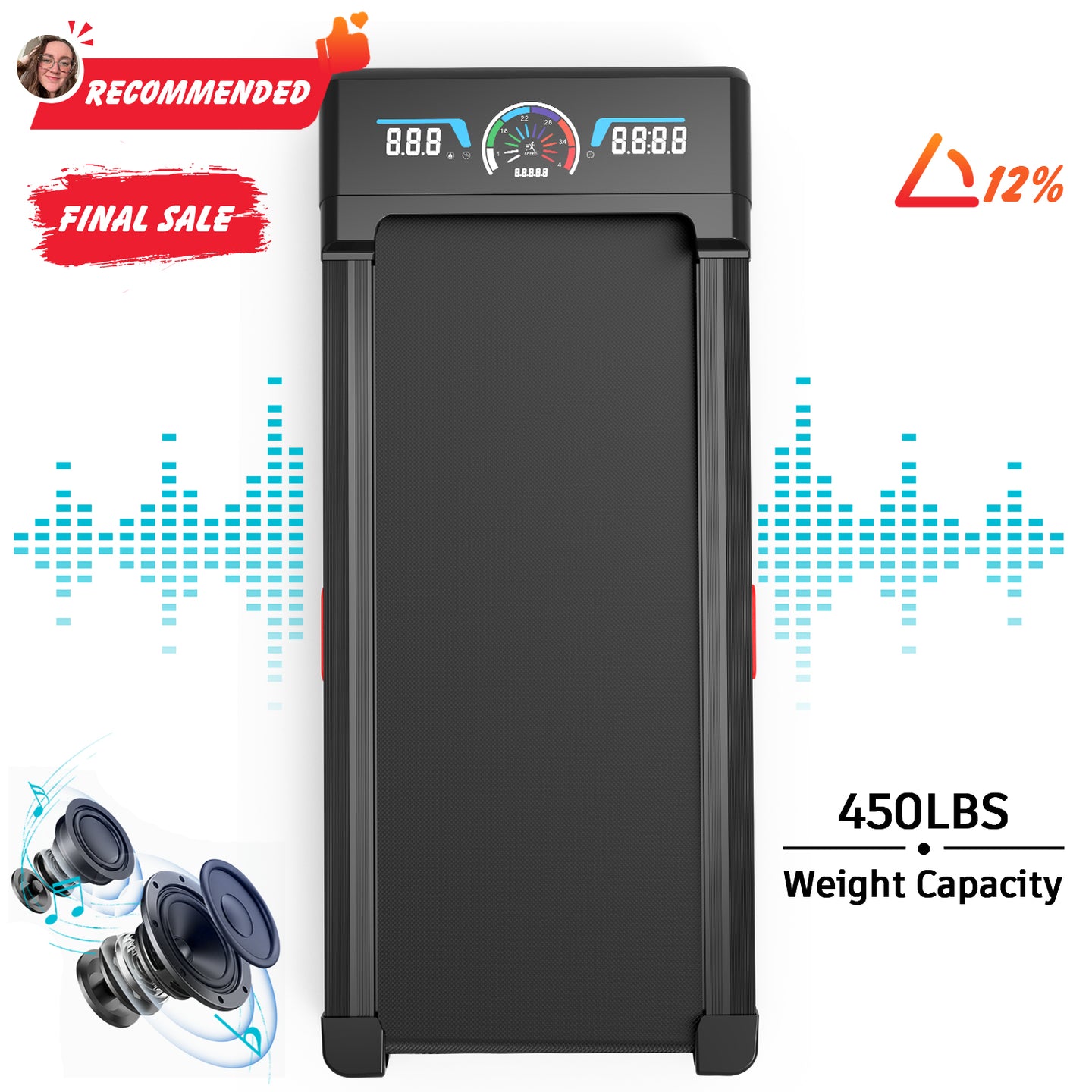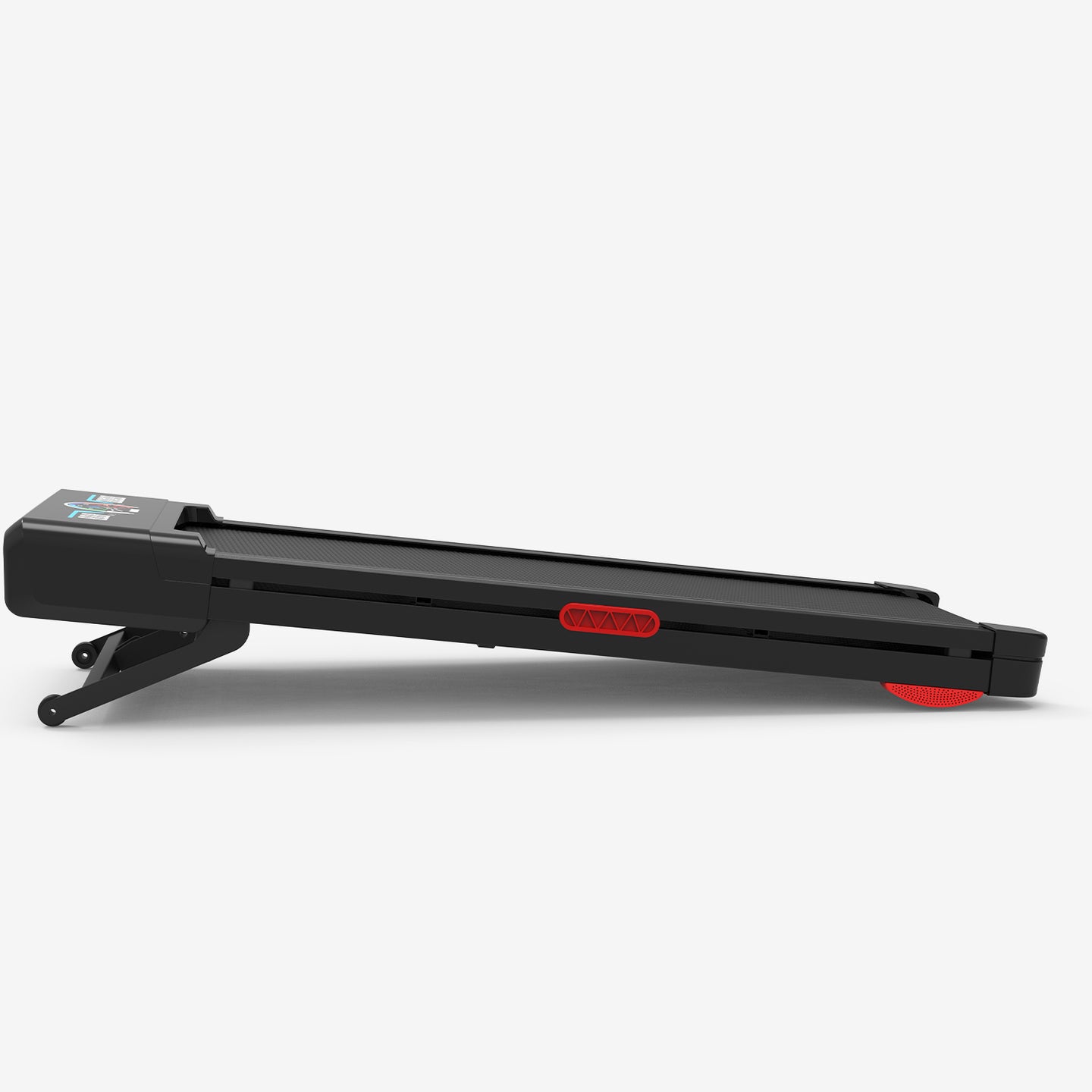Safety Tips for Beginners Using Walking Pad Treadmills
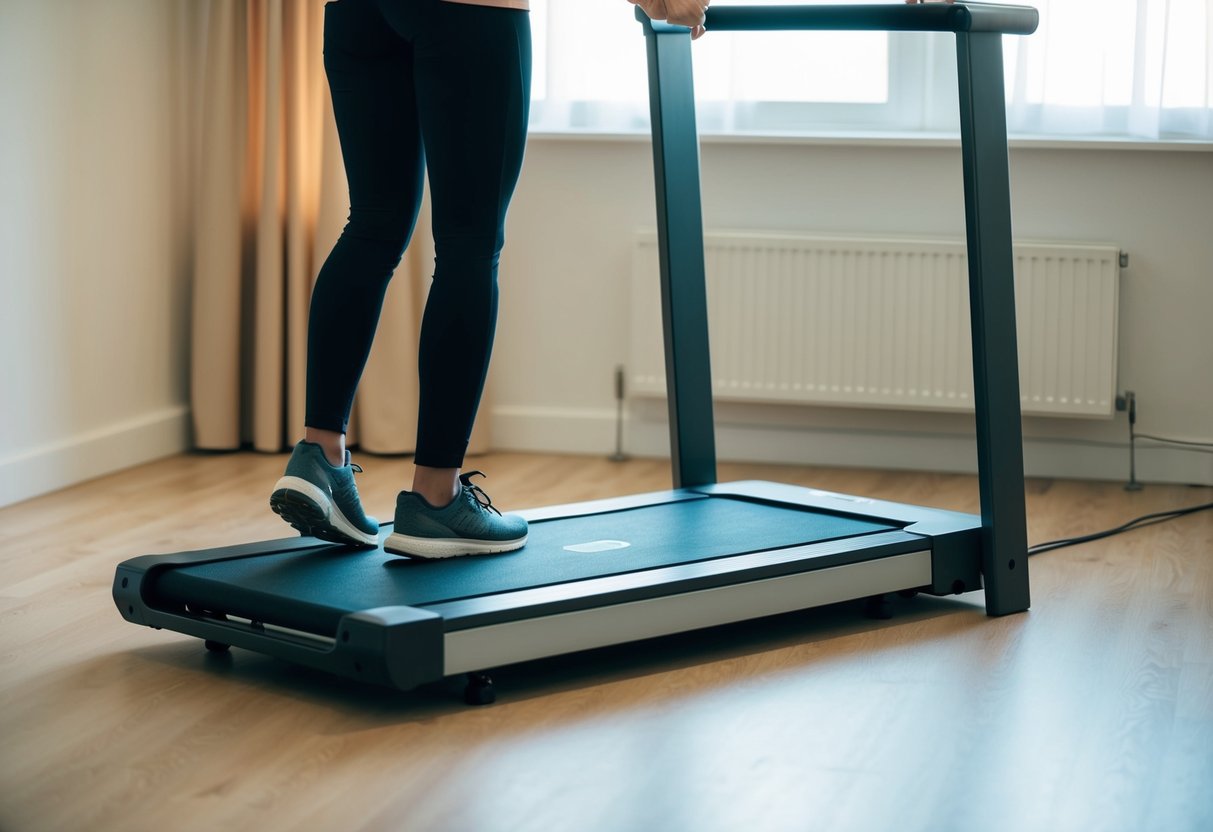
Don’t forget to check out our Pacerocker, Trailviber, and Trailviber Auto Incline walking pad treadmills.
Walking pad treadmills are revolutionizing home workouts, offering a compact and convenient way to stay active. These innovative devices provide a safe and effective means to incorporate walking into your daily routine, even in small living spaces. We've seen a surge in their popularity, especially among those seeking to balance work-from-home life with fitness goals.
As with any exercise equipment, safety is paramount when using walking pad treadmills. Beginners should approach these machines with caution and knowledge to ensure a positive experience. By following proper guidelines, users can minimize risks and maximize the benefits of their new fitness companion.
In this post, we'll cover essential safety tips for newcomers to walking pad treadmills. From proper setup to correct usage techniques, we'll guide you through the basics of safely incorporating this versatile equipment into your lifestyle.
Key Takeaways
- Start with proper setup and familiarize yourself with the machine's features
- Begin slowly and gradually increase speed and duration as you build confidence
- Maintain your walking pad treadmill regularly for optimal performance and safety
Fundamentals of Walking Pad Treadmills
Walking pad treadmills offer a compact and convenient way to stay active at home or in the office. These innovative devices combine the benefits of traditional treadmills with space-saving design.
Defining the Walking Pad Treadmill
Walking pad treadmills are slim, portable exercise machines designed for low-impact walking. Unlike bulky traditional treadmills, these sleek devices can easily slide under a desk or bed when not in use.
They typically feature a narrow belt and minimalist design, focusing on walking rather than running. Most models don't have handrails, making them ideal for multitasking while walking.
Walking pads often come with remote controls or smartphone apps for easy speed adjustments. Some advanced models even fold in half for ultra-compact storage.
Key Features to Consider
When choosing a walking pad treadmill, we recommend looking at several important features:
- Motor power: Look for at least 1-2 horsepower for smooth operation.
- Belt size: Wider belts (18-20 inches) provide more stability.
- Speed range: Most walking pads offer speeds between 0.5-4 mph.
- Weight capacity: Ensure it supports your weight comfortably.
- Noise level: Quieter models are better for shared spaces.
Consider additional features like incline options, built-in programs, or compatibility with fitness apps. Safety features such as auto-stop functions and non-slip surfaces are crucial for beginners.
Remember to check the dimensions when folded and unfolded to ensure it fits your space. A good walking pad balances functionality with convenience, making it easier to incorporate movement into your daily routine.
Setting Up Your Walking Pad Treadmill
Proper setup of your walking pad treadmill is crucial for safety and optimal performance. Let's explore the key aspects of choosing a location and installing your new equipment.
Choosing the Right Location
We recommend placing your walking pad treadmill in a spacious area with good ventilation. Ensure there's at least 2 feet of clearance on all sides for safety. Pick a spot near an electrical outlet to avoid using extension cords.
The floor should be level and stable. Carpet can work, but a hard surface is ideal for stability. Keep the treadmill away from direct sunlight and moisture to protect its electronic components.
Consider noise levels and choose a location that won't disturb others. A corner of your living room or a dedicated home gym space can be perfect choices.
Assembly and Installation Tips
Before assembly, carefully unpack all components and check them against the parts list. Read the manual thoroughly to familiarize yourself with the process.
Most walking pad treadmills come pre-assembled, requiring minimal setup. If assembly is needed, follow these steps:
- Unfold the treadmill carefully
- Secure any locking mechanisms
- Connect the console if separate
- Plug in the safety key
Ensure all bolts and screws are tightened securely. Test the walking belt tension and alignment, adjusting if necessary.
Plug the treadmill into a grounded outlet. Avoid power strips or extension cords. Finally, calibrate the treadmill according to the manufacturer's instructions for accurate speed and incline settings.
Getting Started with Your Routine
Starting a new walking routine on your treadmill pad requires proper preparation and technique. We'll cover essential warm-up exercises and the correct walking form to help you get the most out of your workouts safely and effectively.
Warm-Up Exercises
Before stepping onto your walking pad, it's crucial to prepare your body. We recommend starting with gentle stretches targeting your legs, hips, and lower back.
Try ankle rotations - 10 circles in each direction per foot. Follow this with calf stretches, holding each for 15-20 seconds.
Next, do some light marching in place for 1-2 minutes to get your blood flowing. This helps prevent muscle strains and increases flexibility.
Finish your warm-up with arm circles and shoulder rolls to loosen up your upper body. These exercises take just 5-7 minutes but make a big difference in your workout quality and safety.
Correct Walking Form
Maintaining proper form on your walking pad is key to preventing injuries and maximizing benefits. Start by standing tall with your shoulders back and chin parallel to the ground.
Keep your core engaged and your arms bent at a 90-degree angle. As you walk, swing your arms naturally opposite to your legs' movement.
Land on your heel and roll through to your toes with each step. Take comfortable strides - overreaching can strain your muscles and throw you off balance.
Look straight ahead, not down at your feet or the console. This helps maintain good posture and prevents neck strain.
Remember to breathe steadily and deeply throughout your walk. If you can't maintain a conversation, you might be pushing too hard - slow down and focus on form.
Using Your Treadmill Safely
Walking pad treadmills offer a convenient way to stay active, but proper usage is crucial. We'll explore key adjustments and safety features to help you get the most out of your workout while minimizing risks.
Speed and Incline Adjustments
Start with a slow walking pace of 1-2 mph to get comfortable. Gradually increase speed as you build confidence. Many walking pads have a maximum speed of 3.5-4 mph, ideal for brisk walking.
Adjust incline settings carefully. Even a slight incline can significantly intensify your workout. Begin with a flat surface and slowly increase the angle as your fitness improves.
Always use the handrails when changing settings. This helps maintain balance and prevents sudden movements that could lead to falls.
Safety Features and How to Use Them
Familiarize yourself with the emergency stop button. It's typically red and prominently placed. Practice using it before starting your workout routine.
Most walking pads have safety keys. Attach this to your clothing. If you slip, the key pulls out, stopping the treadmill immediately.
Look for models with anti-slip side rails. These provide a safe place to step if you need a break or feel unsteady.
Some units feature auto-stop technology. This halts the belt if no movement is detected for a set period, adding an extra layer of protection.
Maintaining Your Walking Pad Treadmill
Proper maintenance is crucial for keeping your walking pad treadmill in top shape. Regular care ensures optimal performance and extends the lifespan of your equipment.
Regular Cleaning Tips
We recommend wiping down your walking pad after each use. A damp cloth works well to remove sweat and dirt. For tougher stains, use a mild soap solution.
Don't forget to clean underneath the belt periodically. Unplug the machine, then lift the belt to remove any debris. This prevents damage and maintains smooth operation.
Vacuum around and under the treadmill weekly. This keeps dust from accumulating and potentially affecting the motor.
Lubricate the belt every 3-6 months, depending on usage. Check your manual for specific instructions and recommended lubricants.
Long-Term Maintenance Advice
Inspect your walking pad's belt tension monthly. A belt that's too loose or tight can cause premature wear. Adjust it according to the manufacturer's guidelines.
Check all bolts and screws quarterly, tightening any that have loosened. This prevents wobbling and ensures safety during use.
Listen for unusual noises during operation. Squeaking or grinding sounds may indicate the need for lubrication or part replacement.
Keep the walking pad in a cool, dry place to prevent moisture damage. If possible, use a dehumidifier in humid environments.
Schedule professional maintenance annually. A technician can spot potential issues before they become major problems, saving time and money in the long run.
Progress Tracking and Goal Setting
Tracking progress and setting goals are crucial for success when using a walking pad treadmill. These practices help maintain motivation and provide a clear path forward in your fitness journey.
Monitoring Your Progress
We recommend keeping a workout log to track your walking sessions. Note the duration, distance, and speed for each workout. Many walking pad treadmills have built-in monitors that display these stats.
Take weekly measurements of your weight, waist circumference, and body fat percentage. This data helps you see changes over time that may not be immediately noticeable.
Consider using a fitness app or smartwatch to automatically record your workouts and vital stats. These tools often provide helpful visual graphs of your progress.
Setting Achievable Goals
Start by setting small, realistic goals. Aim to increase your daily step count by 500-1000 steps each week. This gradual approach helps prevent burnout and injury.
Create both short-term and long-term goals. A short-term goal might be walking for 20 minutes without stopping. A long-term goal could be completing a virtual 5K walk.
Use the SMART method when setting goals: Specific, Measurable, Achievable, Relevant, and Time-bound. For example: "I'll walk 30 minutes on my treadmill 5 days a week for the next month."
Regularly review and adjust your goals as you progress. Celebrate your achievements, no matter how small, to stay motivated on your fitness journey.
Overcoming Challenges
Using a walking pad treadmill regularly can present some obstacles. Let's explore ways to push through common hurdles and keep making progress.
Dealing with Plateaus
Plateaus are a normal part of any fitness journey. When progress slows, we've found mixing up our routines to be effective. Try increasing the incline or adding short bursts of faster walking. Interval training can jumpstart results and break through stagnation.
Changing the time of day we exercise sometimes helps too. Our bodies respond differently in the morning versus evening. Tracking our steps, distance, and time can reveal small improvements we might otherwise miss.
Don't forget to reassess our goals periodically. As we get fitter, what once challenged us may now be too easy.
Staying Motivated
Motivation can wane over time, but we've got strategies to keep the fire burning. Setting small, achievable weekly goals gives us frequent wins to celebrate. Tracking progress in a fitness app or journal makes our efforts tangible.
Finding a walking buddy or joining online communities centered around walking pad use can provide accountability and encouragement. We love sharing our successes and challenges with like-minded individuals.
Music or podcasts can make our walking sessions fly by. Creating themed playlists for different moods or workout intensities adds fun variety. Remember, consistency is key - even a short daily walk is a victory.
Utilizing Walking Pad Treadmill Accessories
Walking pad treadmills offer a range of accessories to enhance your workout experience. These add-ons can boost comfort, safety, and functionality.
Enhancing Your Experience
We recommend starting with a non-slip mat to reduce noise and protect your floors. It also helps stabilize the treadmill during use. A phone or tablet holder is essential for entertainment or tracking your workout stats. Look for adjustable options that securely grip your device.
Investing in a good quality water bottle holder keeps hydration within reach. Some models clip onto the treadmill frame, while others are freestanding. For safety, we suggest a safety key with a clip that attaches to your clothing. This stops the treadmill if you stumble or fall.
Heart rate monitors can be invaluable for tracking your workout intensity. Many walking pads are compatible with wireless chest straps or wrist-based monitors.
Optional Add-Ons and Upgrades
Consider upgrading your walking pad with a larger console display for easier reading of your stats. Some models offer attachable consoles with more advanced features. Bluetooth speakers can enhance your audio experience, allowing you to enjoy music or podcasts without headphones.
For those working at a desk, a compatible treadmill desk attachment turns your walking pad into a workstation. These often include adjustable height settings and space for your laptop or documents.
Maintenance kits are worth considering to keep your treadmill in top condition. These typically include lubricant, cleaning solutions, and tools for minor adjustments.
Lastly, if storage is a concern, we recommend looking into folding mechanisms or wheel attachments for easier movement and storage of your walking pad treadmill.
Frequently Asked Questions
Walking pad treadmills offer a convenient way to stay active, but it's important to use them safely. We've compiled answers to common questions about getting started and using these devices effectively.
What are the best practices for beginners starting out on a walking pad treadmill?
Start slow and gradually increase your pace. We recommend wearing comfortable, supportive shoes and loose-fitting clothing. Keep your posture upright and look straight ahead, not down at your feet.
Always use the safety clip or key. Begin with shorter sessions, around 10-15 minutes, and build up over time as you get more comfortable.
How can one safely incorporate a walking pad into a standing desk setup?
Ensure your desk is at the correct height for typing while walking. We suggest starting with a slow pace, around 1-2 mph. Keep your workspace organized to prevent items from falling.
Take regular breaks to rest and stretch. Be mindful of your posture and adjust your walking speed if you notice any discomfort or difficulty concentrating on work tasks.
What precautions should seniors take when using a walking pad for exercise?
Consult with a doctor before starting any new exercise routine. We advise using handrails or having a sturdy chair nearby for support if needed. Start with a very slow pace and short durations.
Wear proper footwear with good traction. Be aware of any balance issues and stop immediately if you feel dizzy or unstable.
What is the recommended duration for a walking session on a treadmill for beginners?
Start with 10-15 minute sessions. We suggest gradually increasing by 5 minutes each week as your stamina improves. Listen to your body and don't push too hard too soon.
Aim for consistency rather than long durations initially. Try to walk 3-5 times a week, even if sessions are short.
How can you ensure safety when using an under-desk treadmill while working?
Keep your workspace clutter-free. We recommend using a desk mat to reduce noise and vibration. Set your walking speed slow enough that you can comfortably type and focus on work.
Take regular breaks to stretch and rest. Be mindful of any cords or cables to prevent tripping hazards.
Can multitasking, such as typing, be safely done on a walking pad treadmill?
Yes, but it requires practice and caution. We suggest starting with simple tasks like reading emails before progressing to typing. Keep your walking speed slow, typically 1-2 mph.
Use a stable desk or treadmill with a built-in workspace. Focus on maintaining good posture and hand position while typing. If you feel unsteady or distracted, slow down or stop.
Ensure safe use of walking pad treadmills with our beginner's guide. Learn essential tips for setup, usage, and maintenance to maximize safety and benefits.



